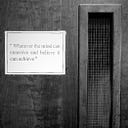Harmonic Analysis using ETAP
Harmonic is one of the most important concepts on the power system that cannot be neglected since it can affect the power quality and operation of equipment. High levels of Harmonics in the system may lead to overheating component thus causing shorten the life of the equipment, reduced power factors. Definitely, the ideal power source for power systems is a pure sinusoidal wave. these pure waves can be distorted from a sinusoidal form due to the presence of harmonics.
Harmonics distort current and/or voltage waves, disturbing the electrical distribution system and degrading power quality.
Basically, harmonics are caused by non-linear loads. Load draws current that does not have the same waveform as the voltage supply is called non-linear. Rectifiers, uninterruptible power supply (UPS), and variable frequency drives (VFD), all are examples for harmonics source and make the voltages and currents distorted.
Nonlinear loads change the sinusoidal nature of the ac power current (and consequently the ac voltage drop), thereby resulting in the flow of harmonic currents in the ac power system that can cause interference with communication circuits and other types of equipment. (Read IEEE std 510)
Preform harmonic analysis
This article describes how to analyze harmonic of the power system using ETAP. So as usual, the first thing you need to do is modeling your system/network as a single line diagram to perform harmonic analysis and set all the parameters to the components that we have devised including power gird, transformer, cables, loads, etc..
In the below system, VFDs are used as a harmonic source that will inject harmonic current to the system.
First of all, you need to adjust the Harmonic sources information in your system (VFDs, UPS, static loads .. etc), just by double click on the component symbol in the SLD and open the Harmonic page, ETAP provides two option, IEEE 510 equation or use library data where you can choose load type, model and manufacturer. This is a necessary step to perform Harmonic analysis.
Next, we will select harmonics analysis mode in the mode toolbar.
Once enter harmonics analysis mode, the study toolbar automatically appears on the right-hand side of the screen.
By default, ETAP sets all the buses to allow 2.5% THD (Total Harmonic Distortion) and 1.5% IHD (Individual Harmonic Distortion) in accordance with the IEEE 519 standards.
You could adjust it according to your requirements just double click on the bus-bar in your SLD. you’ll see the popup window similar to the following:
Note that, the total harmonic is the sum of 3rd+5th+… etc, this is called THD- Total Harmonic Distortion. Where the IHD- Individual Harmonic Distortion measures the ratio of a certain harmonic component with the fundamental component
The 3rd harmonic has higher amplitude compared to other 5th, 7th…etc. Thereby reducing 3rd harmonic will drastically decrease the THD.
· Run Harmonic load Flow Study
Select run Harmonic load flow study option on analysis toolbar to execute harmonic load flow calculations. The output results will appear on the one-line diagram as seen below.
· Alert view
Alert view option lists all equipment with critical and marginal violations based on IEEE std 510. From the alert window (below) it show that total harmonics on Bus 1 & 2 are exceeding the limit of THD (Critical), 3.22% THD on bus-bar 2, and 2.86% on bus-bar 1.
· Harmonics analysis plots
The voltage waveforms plot of bus 1 & 2 can be generated by click on Harmonics analysis plots option.
· Harmonics Filter Sizing
Harmonic filter is a common solution to eliminate the harmonics distortion in the power network. It strike a good balance between performance and cost.
To size the filter we need certain information from load flow analysis including MVA and existing power factor values.
Steps:
- Apply Load flow analysis for PF, current, and MVA.
- Double click on Harmonic filter to open Harmonic Filter Editor, then go to parameter page.
- From parameter page you can select the filter type, then hit ‘Size Filter’ button.
- Another window ‘Harmonic filter sizing’ will open where you can enter the required information, harmonic order, harmonic current, existing pf, Desired pf, and MVA values.
- Press size filter button.
- Press substitute
- Add value for R (resistor), and value of Q factor.
Q factor is the selectivity or tuning response of the simple single resonant frequency filter circuit is defined by its Q or quality factor and can be calculated by the equation:
Where n = Harmonic order, R = Resistance, XL = inductor Reactance, and Xc = capacitor reactance (Xc & XL values of the filter that are taken from Filter editor page)
Here the result of applying harmonic flow analysis. The THD on Bus 1 reduced from 2.86% to 1.98%, and 3.22% to 2.23% on bus 2.
The voltage waveforms of bus-bar 1&2 before and after adding harmonic filter:
That’s it!
We learned in this tutorial:
- What is meant by harmonics and How it can effect our system/equipment
- What does THD & IHD mean
- How to preform harmonic load flow study using ETAP
- How to generate harmonics plots for certain component
- how to size a harmonic filter to mitigate harmonic
I really hope you find this article helpful. If you have any questions, feedback or you want to share more information about the topic discussed above, please don’t hesitate to ask through gmail or add me on LinkedIn.
References:
- ETAP help, ETAP 12.6.0 software.
- Harmonics and Power Systems book, By Francisco C. De La Rosa.
- IEEE 510, Recommended Practice and Requirements for Harmonic Control in Electric Power Systems.
